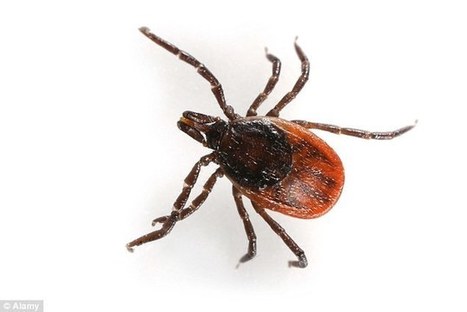In the US, some ticks carry disease; in Massachusetts, Lyme’s disease is the most common disease transmitted by ticks. Ticks are generally found in grassy, brush, or wooded areas. They are really tiny – about the size of a poppy seed or a sesame seed – and they are difficult to see. They do not fly or jump. They crawl onto people and animals when we brush against leaf litter or the tips of grasses and shrubs.
 Prevention begins with you! Here is information to help you stay safe if you live, work, or spend leisure time in an area likely to have ticks:
Prevention begins with you! Here is information to help you stay safe if you live, work, or spend leisure time in an area likely to have ticks:
The most important thing that you can do is check yourself, your children and your pets daily after being outside. If you see a tick removes it as soon as possible.
- Wear long-sleeved, light colored shirts and long pants that can be tucked into your socks.
- Use insect repellents with DEET. Repellents containing DEET can be applied to exposed skin and clothing. Read the label before applying.
The Mass Department of Health recommends that insect repellents not be used on infants younger than 2 months. Check with your doctor before using them on infants and children. The effectiveness of natural repellents is not known. Permethrin containing products kill insects and ticks that contact them; they are not to be used on the skin. Talk to your veterinarian about the best way to protect your pets.
For more information, contact the Massachusetts Department of Public Health at this website.
Continue to follow NEW Health for more health and wellness news and information.




Use tweezers to remove a tick. Get as close to the head as possible and gently pull.. Do not pull by its body since you’ll release some of its fluid. Most of the tick will be above your skin. Good to take a shower after being outdoors for any length of time. Always do a body check….some of the ticks are tiny and very difficult to see. If you should find a tick on clothing, put garment in the dryer — that will kill the tick. If a red spot appears, check with Dr. You may be put on an antibiotic.
I had Lyme disease (NOT pleasant) and never even saw a tick on me or a bite from one. I can tell you that you can’t be too careful. If you live or go anywhere near the woods at any time and at some point start feeling feverish, don’t be shy about going to see a doctor. Early diagnosis is key (and apparently I was very lucky).
Also realize that if you travel, Lyme disease is unheard of in certain parts of the country. Mention where you live or that you have been in the Northeast if you are not in this area at the time of the doctor’s visit.
Thank you for information very helpful!